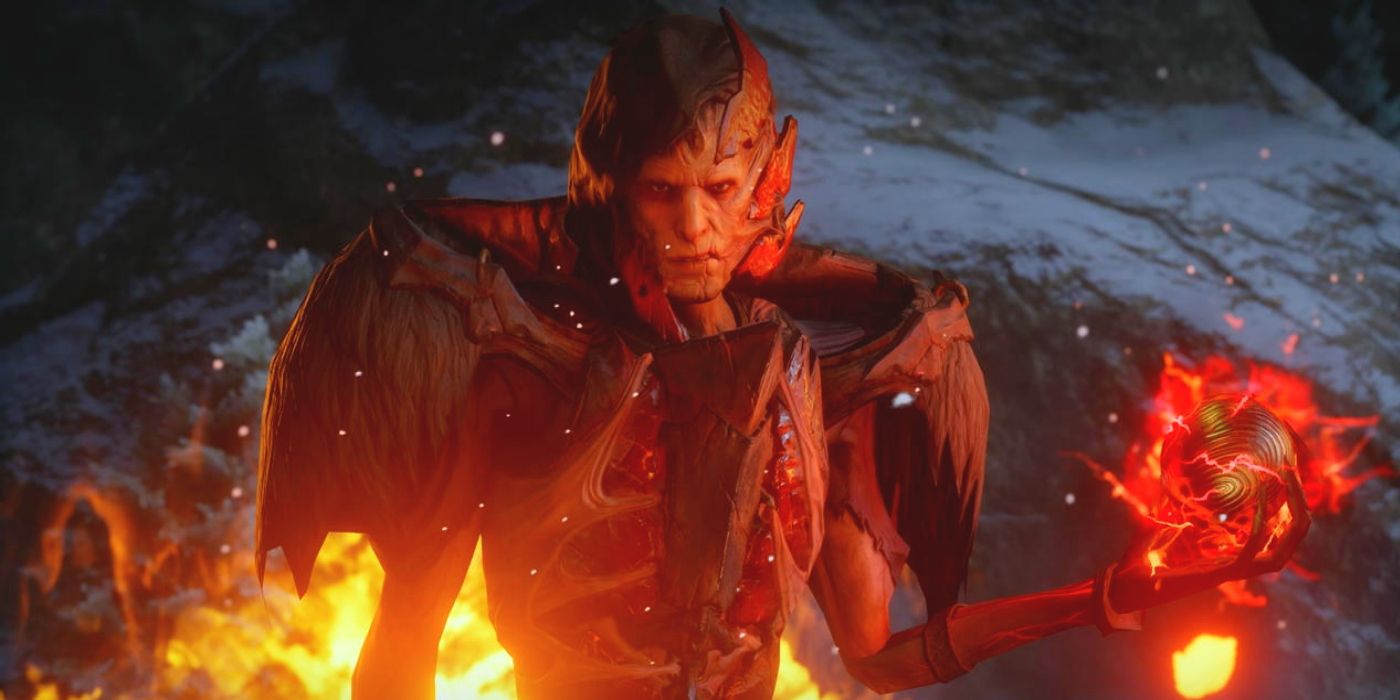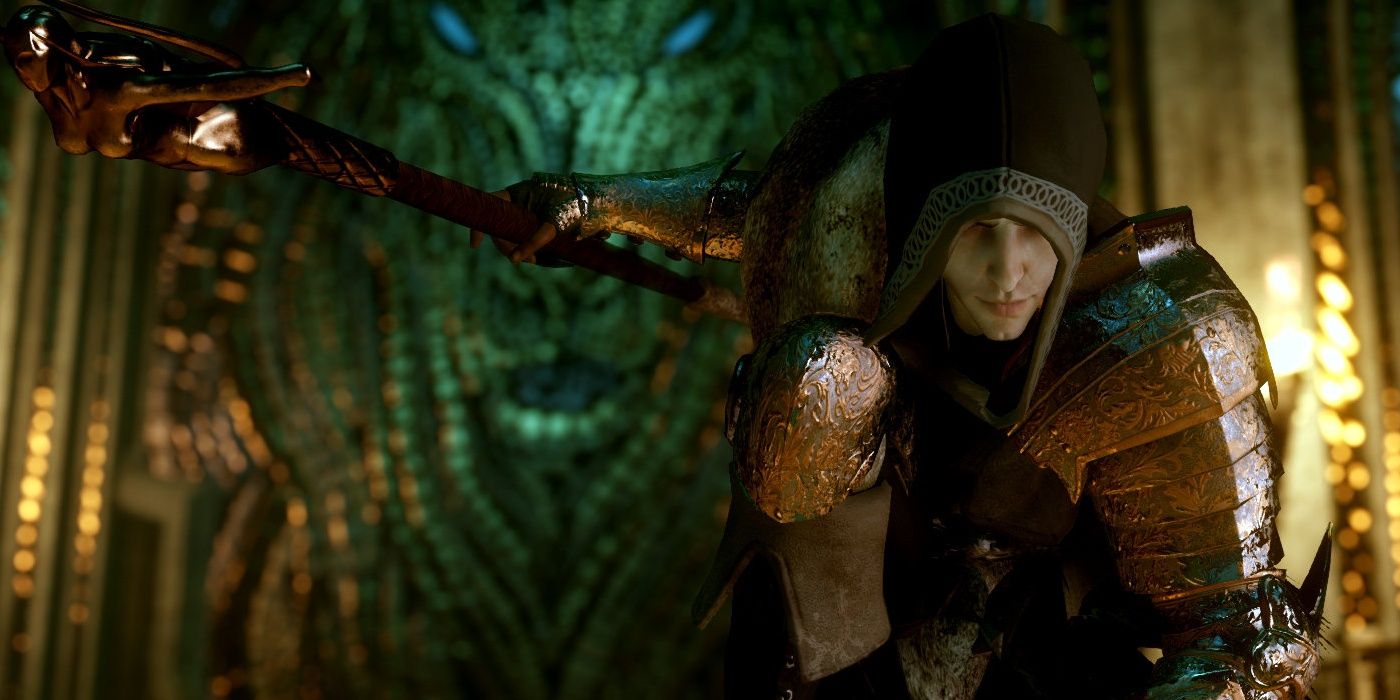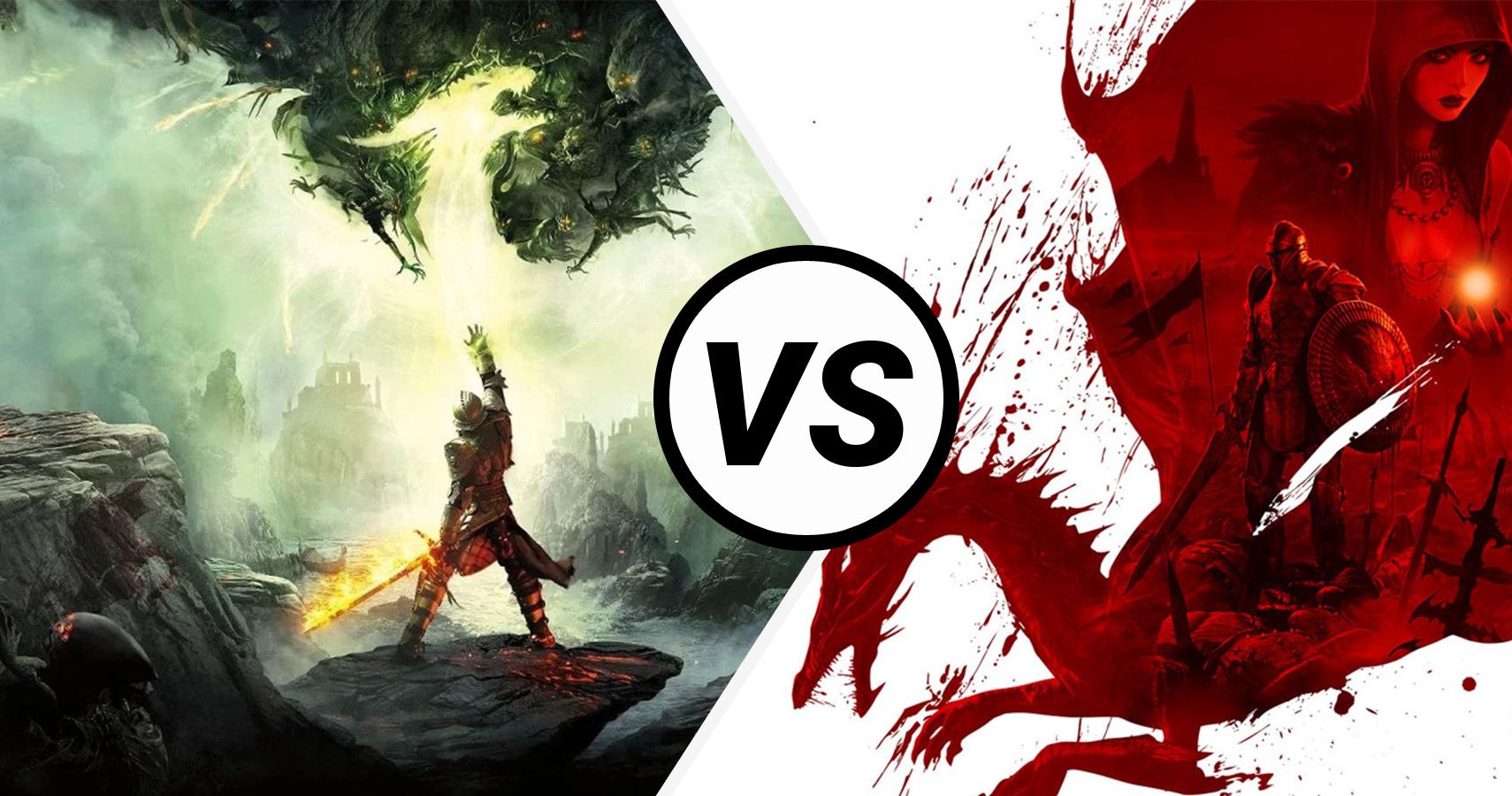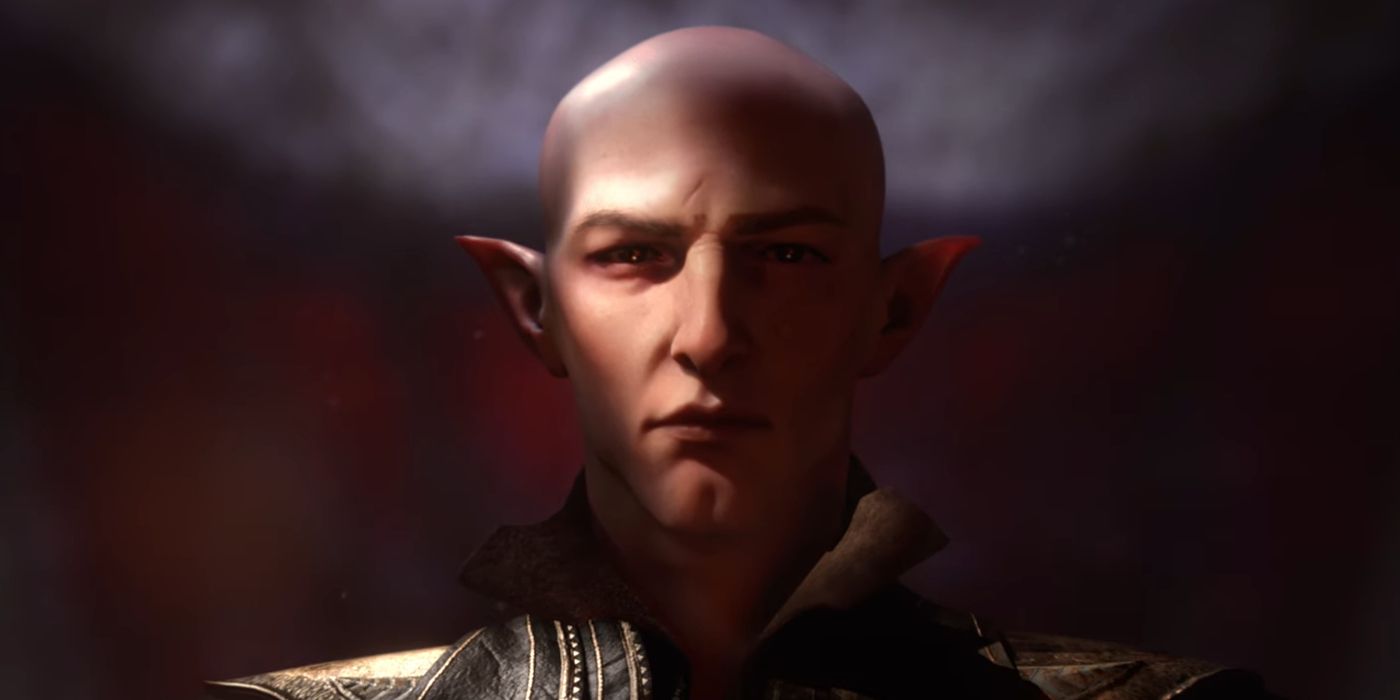Dragon Age: Inquisition had some great companion characters, beautiful scenery, and a powerful depiction of the Mage-Templar War, which had been building since Dragon Age: Origins. However, its approach to storytelling always meant that Inquisition was a bridge of sorts from the past to the future. This is something that Dragon Age 4 will need to avoid.
If Dragon Age 4's trailer from The Game Awards 2020 is anything to go by, the upcoming game could be walking down the same road. That said, there's not enough to conclude this for sure, but Dragon Age 4 needs to be able to stand on its own two feet.
Inquisition Bridging Past and Future
Dragon Age: Inquisition may have a compelling story at times, but it's hard to argue that the game's story is self-contained. The Inquisition is already seen to be in the early stages of reforming during the interrogation bookends to Dragon Age 2, making it clear that the player character's involvement was not necessary to the resurgence of the organization. Inquisition's main villain is Corypheus, but it's revealed towards the end of the game that the bigger threat comes from companion Solas, who is in fact the ancient elven deity known as the Dread Wolf.
As a result, Dragon Age: Inquisition just doesn't feel like a self-sustaining story. Its final and most powerful moments, including many found in the game's last DLC, Trespasser, all rely on building up the threat of the Dread Wolf in Dragon Age 4 without giving any satisfying resolution to the Inquisitor's story.
In part, this is because the story of Dragon Age: Inquisition isn't really about the Inquisitor at all. The player character is thrown into the role after a fluke causes them to get the "Anchor" on their left hand, a power which allows them to close rifts in the Veil that separates the material realm from the world of magic, known as the Fade. This instantly launches them to the top of the Inquisition as the new Inquisitor, and though there are a few important choices which can be made in Dragon Age: Inquisition's story like choosing between siding with the mages or the Templars, both the start of the story and its ending decenter the agency of the Inquisitor entirely. The start of the game launches the character to the top of the Inquisition, and the ending reveals that, in part, they were being manipulated the entire time.
With Dragon Age: Inquisition, it's hard to avoid the feeling that the main conflict is only a stepping stone towards something greater. As a villain, Corypheus calls back to Dragon Age: Origins' Darkspawn threat, while ultimately feeling like a tamer copy. As a future villain, Solas has yet to show his full hand.
Comparing Inquisition And Origins
Compared to Inquisition, the story of Dragon Age: Origins is almost entirely self-contained. There are a few residual questions, like what will become of Morrigan and her Old God Baby if the player went through with her ritual instead of choosing a sacrifice to end the Blight. However, the potential for Morrigan's child to do evil in the future feels more like the morally ambiguous cost of the game's final decision, rather than a plot-point which necessarily needs resolving in a future game.
The Fifth Blight is Origins' main threat, and at the end of the game, the Fifth Blight is unambiguously defeated. On the other hand, the reveal at the end of Inquisition that Solas plans to destroy the Veil, potentially wiping out all non-elven life on Thedas, immediately dwarfs the main conflict in Inquisition in terms of its stakes. The fact that Inquisition leaves the Dread Wolf plotline as a cliff hanger only serves to remind the player of the comparative weakness of the Corypheus plotline, while drawing attention to the lack of resolution for the game's more interesting antagonist.
To make matters worse, it's already clear that Dragon Age 4 will have a completely new player character, which means that while the Dread Wolf plotline will be returning, the game will likely not be able to directly deal with the relationship built between the Inquisitor and Solas over the last game, and the betrayal of trust revealed in the final act. Although Dragon Age 4 will pick up on the broader Dread Wolf arc, it is vital that the game's story feels self-contained from the perspective of the new player character. This new PC makes this entirely possible, but how the game handles player agency remains to be seen.
The Challenges Facing Dragon Age 4
Dragon Age 4 cannot end with the promise of some greater, future conflict if it's going to tell a satisfying story. It also can't tell its story as if it's just picking up where the last game left off. The new Dragon Age protagonist will need time to develop in their own right first, to find their own reasons to get involved in the Dread Wolf plotline, and to be given an opportunity to develop a unique relationship with Solas and his plans for Thedas' future. At the end of the game, it will be vital that the Dread Wolf plotline is completely resolved if Dragon Age 4 is going to be as satisfying as Origins and if the new game is going to avoid Inquisition's narrative missteps here.
In one sense, BioWare has made creating a self-contained story for Dragon Age 4 a huge challenge for itself. The studio's insistence on introducing a new player character with every Dragon Age game has created a huge disconnect between what the player understands about the game's world and what their player character understands. The studio will have to find a way to create a unique relationship between the new PC and Solas, without it feeling like the story is retreading old ground for fans who played Inquisition, but for now, fans have to simply wait and see.
Dragon Age 4 is in development.




